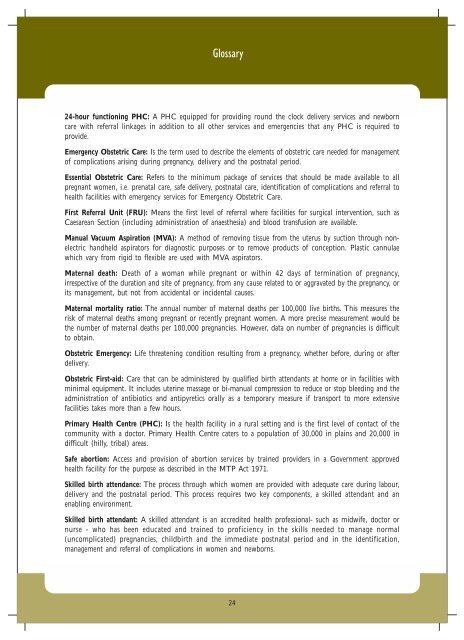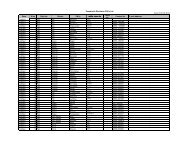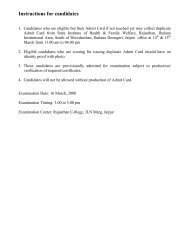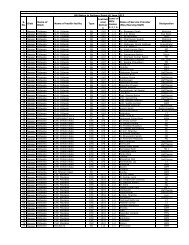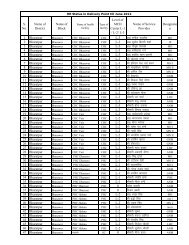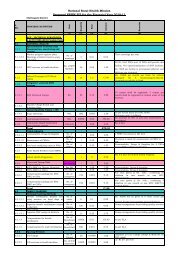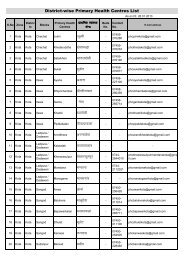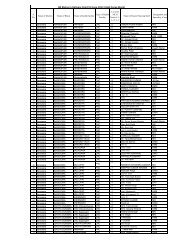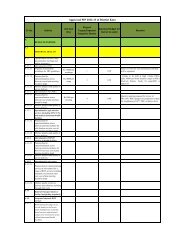Guidelines for Operationalising A Primary Health ... - NRHM Manipur
Guidelines for Operationalising A Primary Health ... - NRHM Manipur
Guidelines for Operationalising A Primary Health ... - NRHM Manipur
You also want an ePaper? Increase the reach of your titles
YUMPU automatically turns print PDFs into web optimized ePapers that Google loves.
Glossary24-hour functioning PHC: A PHC equipped <strong>for</strong> providing round the clock delivery services and newborncare with referral linkages in addition to all other services and emergencies that any PHC is required toprovide.Emergency Obstetric Care: Is the term used to describe the elements of obstetric care needed <strong>for</strong> managementof complications arising during pregnancy, delivery and the postnatal period.Essential Obstetric Care: Refers to the minimum package of services that should be made available to allpregnant women, i.e. prenatal care, safe delivery, postnatal care, identification of complications and referral tohealth facilities with emergency services <strong>for</strong> Emergency Obstetric Care.First Referral Unit (FRU): Means the first level of referral where facilities <strong>for</strong> surgical intervention, such asCaesarean Section (including administration of anaesthesia) and blood transfusion are available.Manual Vacuum Aspiration (MVA): A method of removing tissue from the uterus by suction through nonelectrichandheld aspirators <strong>for</strong> diagnostic purposes or to remove products of conception. Plastic cannulaewhich vary from rigid to flexible are used with MVA aspirators.Maternal death: Death of a woman while pregnant or within 42 days of termination of pregnancy,irrespective of the duration and site of pregnancy, from any cause related to or aggravated by the pregnancy, orits management, but not from accidental or incidental causes.Maternal mortality ratio: The annual number of maternal deaths per 100,000 live births. This measures therisk of maternal deaths among pregnant or recently pregnant women. A more precise measurement would bethe number of maternal deaths per 100,000 pregnancies. However, data on number of pregnancies is difficultto obtain.Obstetric Emergency: Life threatening condition resulting from a pregnancy, whether be<strong>for</strong>e, during or afterdelivery.Obstetric First-aid: Care that can be administered by qualified birth attendants at home or in facilities withminimal equipment. It includes uterine massage or bi-manual compression to reduce or stop bleeding and theadministration of antibiotics and antipyretics orally as a temporary measure if transport to more extensivefacilities takes more than a few hours.<strong>Primary</strong> <strong>Health</strong> Centre (PHC): Is the health facility in a rural setting and is the first level of contact of thecommunity with a doctor. <strong>Primary</strong> <strong>Health</strong> Centre caters to a population of 30,000 in plains and 20,000 indifficult (hilly, tribal) areas.Safe abortion: Access and provision of abortion services by trained providers in a Government approvedhealth facility <strong>for</strong> the purpose as described in the MTP Act 1971.Skilled birth attendance: The process through which women are provided with adequate care during labour,delivery and the postnatal period. This process requires two key components, a skilled attendant and anenabling environment.Skilled birth attendant: A skilled attendant is an accredited health professional- such as midwife, doctor ornurse - who has been educated and trained to proficiency in the skills needed to manage normal(uncomplicated) pregnancies, childbirth and the immediate postnatal period and in the identification,management and referral of complications in women and newborns.24


